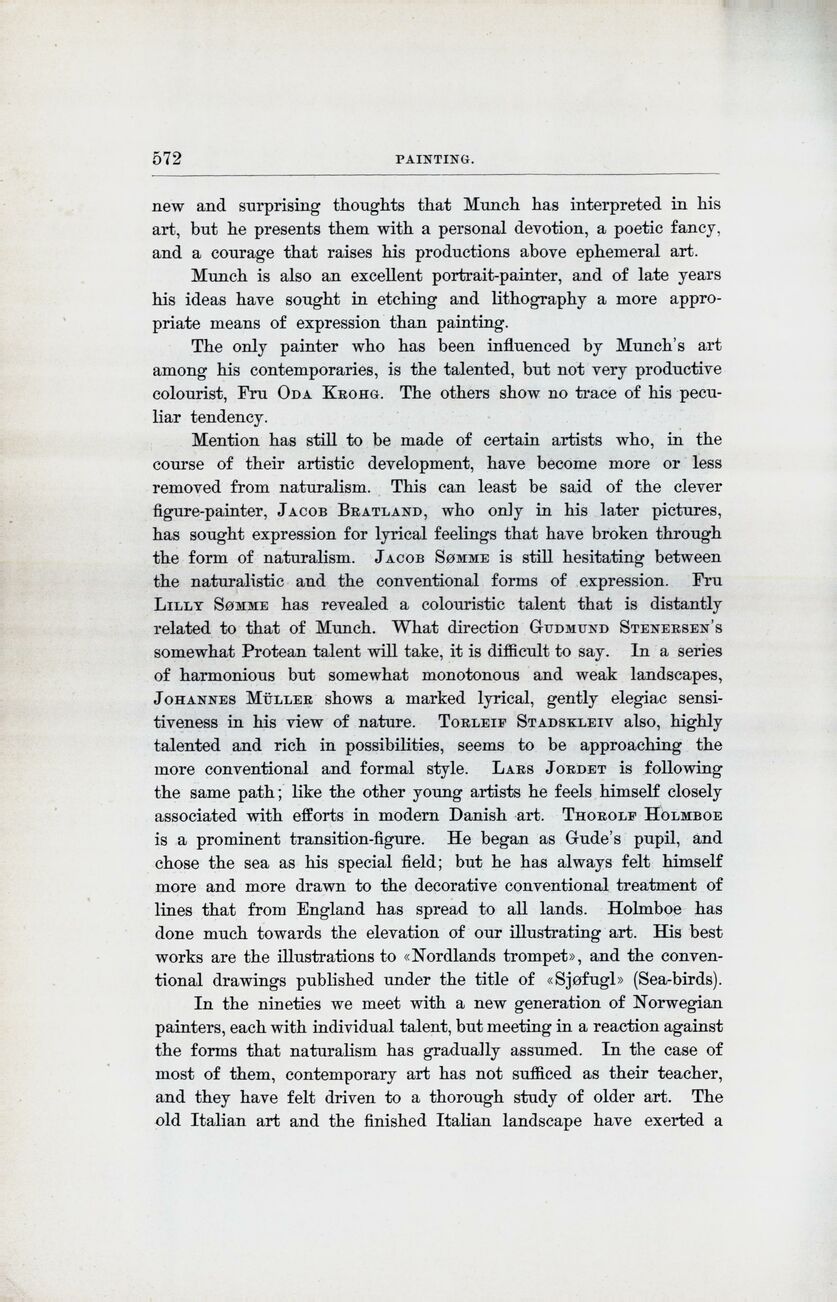
Full resolution (JPEG) - On this page / på denna sida - Painting, by Jens Thiis

<< prev. page << föreg. sida << >> nästa sida >> next page >>
Below is the raw OCR text
from the above scanned image.
Do you see an error? Proofread the page now!
Här nedan syns maskintolkade texten från faksimilbilden ovan.
Ser du något fel? Korrekturläs sidan nu!
This page has been proofread at least once.
(diff)
(history)
Denna sida har korrekturlästs minst en gång.
(skillnad)
(historik)
new and surprising thoughts that Munch has interpreted in his
art, but he presents them with a personal devotion, a poetic fancy,
and a courage that raises his productions above ephemeral art.
Munch is also an excellent portrait-painter, and of late years
his ideas have sought in etching and lithography a more
appropriate means of expression than painting.
The only painter who has been influenced by Munch’s art
among his contemporaries, is the talented, but not very productive
colourist, Fru Oda Krohg. The others show no trace of his
peculiar tendency.
Mention has still to be made of certain artists who, in the
course of their artistic development, have become more or less
removed from naturalism. This can least be said of the clever
figure-painter, Jacob Bratland, who only in his later pictures,
has sought expression for lyrical feelings that have broken through
the form of naturalism. Jacob Sømme is still hesitating between
the naturalistic and the conventional forms of expression. Fru
Lilly Sømme has revealed a colouristic talent that is distantly
related to that of Munch. What direction Gudmund Stenersen’s
somewhat Protean talent will take, it is difficult to say. In a series
of harmonious but somewhat monotonous and weak landscapes,
Johannes Müller shows a marked lyrical, gently elegiac
sensitiveness in his view of nature. Torleif Stadskleiv also, highly
talented and rich in possibilities, seems to be approaching the
more conventional and formal style. Lars Jordet is following
the same path; like the other young artists he feels himself closely
associated with efforts in modern Danish art. Thorolf Holmboe
is a prominent transition-figure. He began as Gude’s pupil, and
chose the sea as his special field; but he has always felt himself
more and more drawn to the decorative conventional treatment of
lines that from England has spread to all lands. Holmboe has
done much towards the elevation of our illustrating art. His best
works are the illustrations to «Nordlands trompet», and the
conventional drawings published under the title of «Sjøfugl» (Sea-birds).
In the nineties we meet with a new generation of Norwegian
painters, each with individual talent, but meeting in a reaction against
the forms that naturalism has gradually assumed. In the case of
most of them, contemporary art has not sufficed as their teacher,
and they have felt driven to a thorough study of older art. The
old Italian art and the finished Italian landscape have exerted a
<< prev. page << föreg. sida << >> nästa sida >> next page >>